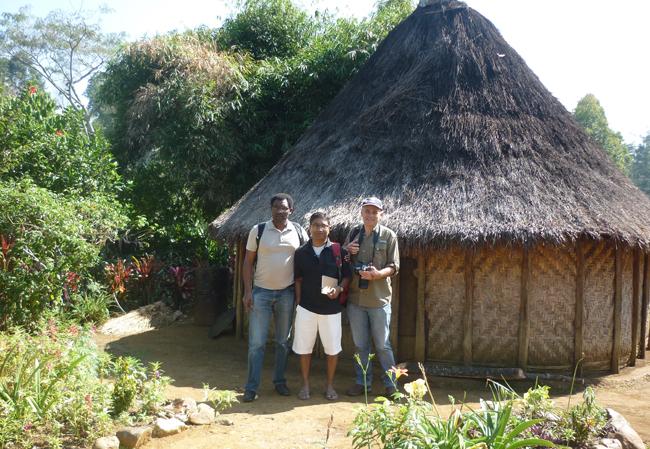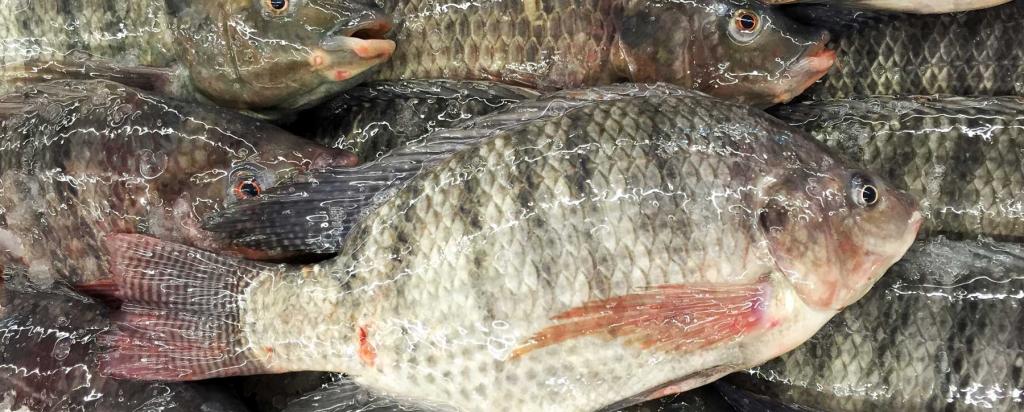

Published on the 22nd April 2015 by ANSTO Staff
With the majority of PNG still living in extreme poverty, pond-based production of tilapia fish is an important source of food and income for rural communities in PNG.
ANSTO research undertaken in collaboration with UNSW Australia and the National Fisheries Authority of Papua New Guinea aims to help fish farmers in the country reduce costs in order to increase incomes and production levels of this important economic and food resource.

ANSTO’s involvement in the project will be to determine if improvements can be made to feed formulations for the farmed fish to reduce resource use and costs, according to Institute for Environmental Research scientist, Debashish Mazumder. “We can achieve this by identifying essential nutrients responsible for the growth of farmed tilapia,” said Mazumder.
“Pond-based production of tilapia is an important source of food and income for rural communities in PNG. Fish farming provides the best opportunity to access protein in rural communities. Although there are more than 50,000 fish farms, the local industry is facing challenges,” according to project leader and chief investigator Associate Professor Jesmond Sammut of UNSW Australia.
“The cost of fish feed remains the most significant economic constraint on small-scale fish farming in PNG. Over the last three years the availability of fish feed ingredients as well as commercially-produced feeds has declined, according to Justin Narimbi,” from UniTech, Lae in PNG.
Narimbi is currently undertaking his master’s research work at UNSW and will continue as a collaborating scientist after his study program in Australia concludes.
Prof Sammut is coordinating this project, which has economic, social, educational and environmental benefits.
The project will take place over four years to improve the production process and environmental sustainability with funding from the Australian Centre for International Agricultural Research (ACIAR). It also involves training and other capacity building opportunities for scientists, academics, fish growers, and other members of local communities.
As a collaborating scientist, Mazumder will assist in determining the dietary pathways of natural and formulated feeds through analyses of the carbon and nitrogen stable isotopes of fish and dietary sources.
Carbon and nitrogen stable isotopes are established tracers of food sources. Using these techniques, food sources that are assimilated and contribute to the growth of tilapia can be identified.
“We will try to determine if the tilapia, in fact, need all the ingredients that are in the feed they currently consume. If they do not need a specific nutrient, then it can be removed to reduce the cost,” said Mazumder.
“There can be up to 12 ingredients or more in the fish feed used by the PNG fish growers in the aquaculture ponds,” said Narimbi.
Narimbi, who was involved in the lead up research project, collected samples from daily and weekly fed aquaculture farms in PNG. Isotopic analysis of tilapia muscle tissue and all potential dietary sources suggests that natural feed such as detritus, algae and zooplankton appear to be favoured more by tilapia than formulated feed.
After 90 days of cultivation, the average final body weight of tilapia receiving daily feed inputs was 134 g (average 19 cm) while in weekly feed it was 92 g (17 cm). However, the difference of 42 g (average of 2 cm) between the daily and weekly fed tilapia does not seem to make a difference in terms of market price.
A 2 cm difference in body length will look very similar when sold in the market. Consequently, fish reared using both feeding practices can fetch the same price. The total cost of feed alone is $53.15 for feeding tilapia daily for 90 days culture period. However, feeding tilapia once a week will only be $4.94.
The fish grower will save almost $48.21 by utilising weekly feeding. At current exchange rates, that equates to about 100 PNG kina. This is a substantial amount of money for the average PNG growers and will greatly improve the economic efficiency associated with tilapia production.
The feed conversion ratio (FCR: the mathematical relationship between food fed and grams of weight gain) was very high (4.3:1) in the daily fed tilapia ponds compared to a small FCR (1:1) in the weekly fed ponds. This suggests that around 4.3 kg of feed was used to produce 1 kg of fish in the daily fed tilapia ponds. Possibly the tilapia were not eating the feed and it was being wasted.
“This could be because of poor quality feed and other reasons which need to be further tested,” explained Mazumder.
Feed is considered the most costly item in aquaculture production because it is manufactured mostly from wild-caught small fish species. The supply of wild-caught small fish species from rivers and oceans is limited.
Environmental agencies are concerned about the growing amount of fishmeal used by the aquaculture industry, especially for the production of fish species that need a high percentage of fishmeal in their diets.
Isotopic analysis to determine the signature of a food source using carbon and nitrogen has been utilised successfully by Mazumder in Australia. His previous studies of the food chain in NSW estuaries uncovered the links in a complex food web.
Mazumder refers to this analysis as nutritional ecology, whereby he can determine precisely the nutrients that are absorbed by an organism.
Very small quantities (mg level) of powdered and homogenised samples are loaded into tin capsules, and are analysed with a continuous flow isotope ratio mass spectrometer (CF-IRMS) according to Institute for Environmental Research stable isotope analyst Barbora Gallagher.
“We are confident that cheaper formulated feeds based on locally-available ingredients and improved feeding and fertiliser strategies would enable farmers to meet the nutritional requirements of tilapia at a lower cost and also achieve growth rates of tilapia that are comparable to those farmed in other developing countries,” explained Mazumder and Sammut.